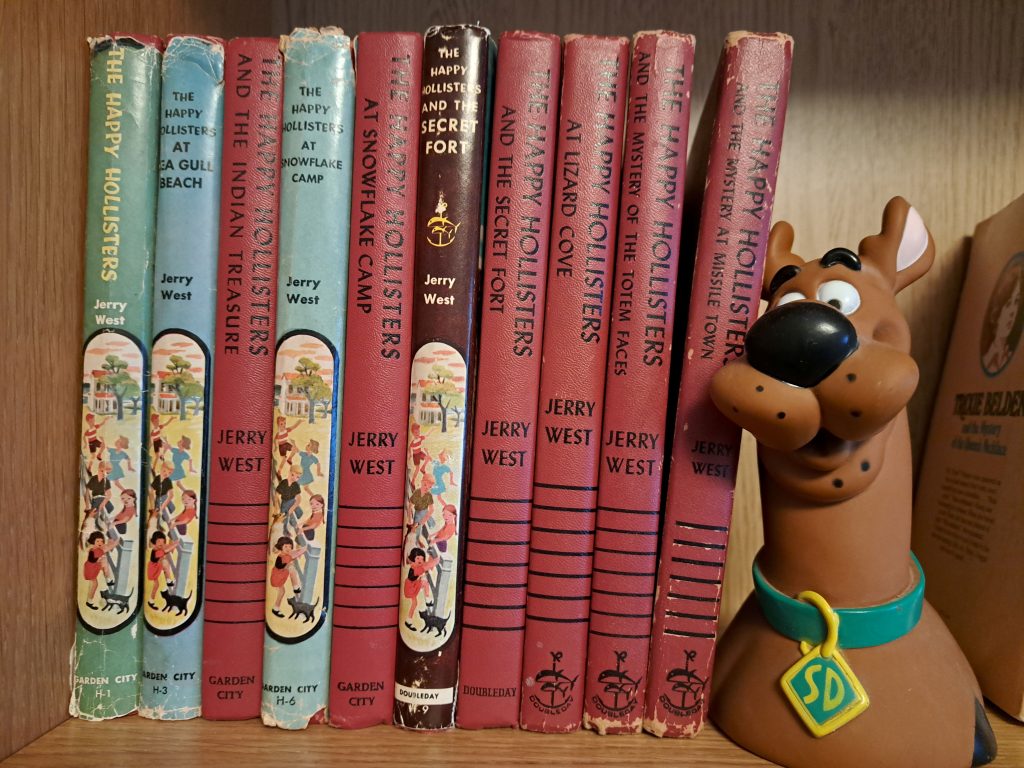Today on the Bwl blog I tell a bittersweet story about my old piano. https://bwlauthors.blogspot.com/


Today on the Bwl blog I tell a bittersweet story about my old piano. https://bwlauthors.blogspot.com/

At this year’s When Words Collide Festival for Readers and Writers, https://www.whenwordscollide.org/ I participated in a panel titled Historical Fact and Fiction: what can and can’t be changed. Moderator Lori Hahnel began by asking how and where to find accurate historical facts. My fellow panelists, John Corry and Donna D. Conrad, talked of the challenges of historical research for novels set centuries ago. John’s novel about British author Geoffrey Chaucer takes place in the 1300s; Donna’s retelling of the story of Mary Magdalene in the first century.
Donna said she used sources from different countries and religious perspectives to get the most accurate spin on Mary Magdalene. John noted that he had to be careful about dates in his research, since most countries changed from the Julian to the Gregorian calendar after his novel’s time period.
My historical novel, A Killer Whisky, set in 1918 during World War One, felt modern in comparison, and I had more research tools available. While I found that reading historical fiction and non-fiction was useful, I learned the most from material published at the time of my novel. I signed up for a one-week free subscription to Newspapers.com and devoured the headlines of the day as well as ads for groceries, houses, jobs, and more. Online, I combed through the 1,000+ page 1918 Sears catalogue for images and descriptions of fashion and other consumer goods. Novels and memoirs published in the early twentieth century provided details of daily life, attitudes of the times, and words and expressions used. To avoid language anachronism, I suggested that the panel audience check out Google Ngram Viewer https://books.google.com/ngrams/. You plug in a word or phrase and a graph tracks its usage in books from 1800 to 2022. For instance, the word “groovy” barely registered before 1960, when it peaked. Then it dropped and hit a higher peak this century, perhaps from people writing about the swinging sixties. My WWI characters would never say “groovy.”
Unless I try my hand at writing alternate history.
Lori asked what we thought of television shows like Bridgerton, a Netflix series based on Julia Quinn’s novels set in early 19th century London. Main characters include wealthy and aristocratic people of colour who are totally accepted in high society.
I said I liked Bridgerton. Everyone watching knows the world wasn’t like that then or even now, but Bridgerton makes you think, what if this alternate world were true? Donna said she enjoys these kinds of shows but cringes at the historical inaccuracy.
Lori brought up her second concern about historical fiction: the abundance of WWII novels. Is the market saturated? Will people ever get tired of reading about that war?
John and Donna thought the trend would continue because writers are constantly finding new angles about the war. I suggested that WWII endures because it is arguably the last heroic war and it is still close to many of us whose parents or grandparents fought in or lived through the war. Perhaps, interest will wane for the next generations, until writers rediscover and reinterpret that momentous time.
As to the panel topic question: what can and can’t be changed? We all agreed you can’t change major known facts. I wouldn’t change key dates about WWI, even though it would probably work better for my novel-in-progress if the war had started a month earlier. John and Donna said they wouldn’t change dates that Chaucer or Mary Magdalene were known to be in particular locations.
I pointed out that Chaucer and Mary were their novels’ main characters, but it might be okay for me to write a novel set in 14th century York and have Chaucer make a cameo appearance despite no evidence that he’d ever gone there. Small changes like that wouldn’t significantly impact history or my main characters and themes, although I think it’s more interesting to readers if the historical figure really was present. We all like to pick up factual trivia from our reading and history is ripe with interesting tidbits.
My historical novel-in-progress begins in Karlovy Vary (aka Karlsbad), a spa town in Czechia (aka Czech Republic). Somewhere I read that Sigmund Freud, founder of psychoanalysis was in Karlovy Vary at the outbreak of World War One, when my novel takes place. Unfortunately, I’ve lost the reference. (Advice to historical fiction writers: keep your references). The Psychiatric Times confirms that Freud visited Karlsbad more than once for health reasons and I’ll do my best to find my missing reference. But if I can’t, would it be wrong to make him a character in my novel? Freud’s interactions with my fictional characters would be interesting and relevant to the story.

In my BWL author blog post today, I pose the question: how accurate must you be when writing historical fiction? https://bwlauthors.blogspot.com/
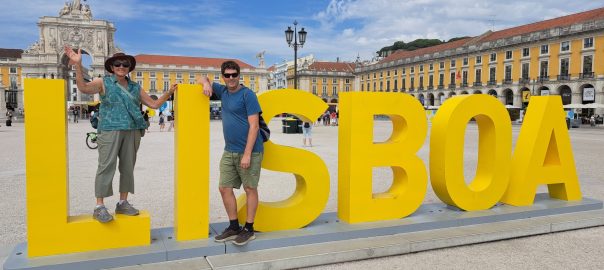
During our trip to Europe last month, my husband Will and I flew from Naples to Portugal. At Lisbon airport, we got a taxi. Naively, we didn’t think to ask in advance what the fare would be or question the absence of a meter in the cab. Friends who have been to Portugal a few times had told us taxis in Lisbon were inexpensive.
Our taxi driver drove quickly to downtown, which isn’t far from Lisbon airport, and arrived at our Airbnb apartment. He told us the fare was 35 Euro (about $57 CAD). This wasn’t cheap, perhaps a little more than we’d pay for a similar ride in Calgary, where I live. We gave him cash, since he didn’t take credit cards, and didn’t add a tip to his inflated price. The taxi took off and we found the phone number for Pedro, who was supposed to meet us at the apartment to let us in.
Before we could phone, a police car drove up and parked. The officer strode toward us.
“How much did you pay for that taxi?” he asked.
“Thirty-five euro.”
“It should only be fifteen euro from the airport,” he said. “I want to take the driver to court. Can you show me your passport?”
We looked down the street and noticed the taxi and another police car were stopped. Presumably, the first police car had followed us from the airport and notified the second car to block the taxi from leaving the narrow street.
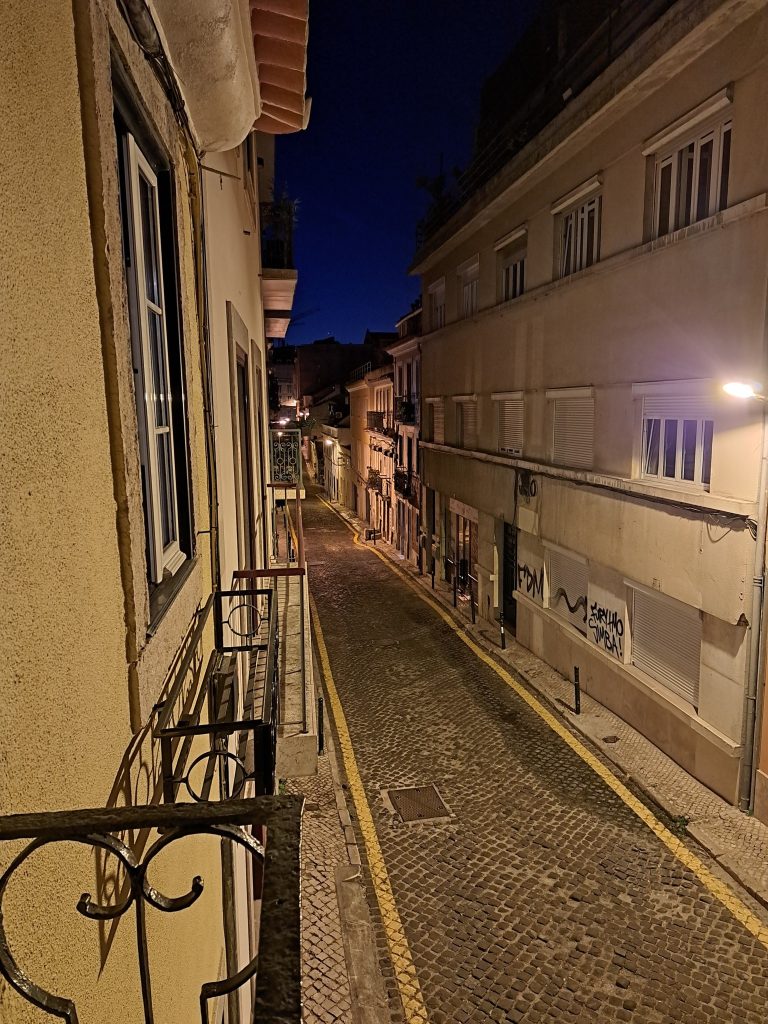
Pedro heard the commotion from our balcony and came down to see what was going on. He and the police officer spoke for a while in Portuguese. We guessed the officer was explaining the situation. With Pedro there, I felt assured the officer’s request to see our passports was legitimate.
The officer photographed Will’s passport and told us that we wouldn’t have to go to court, but he needed the information for the case. He asked for our phone number and Canadian address.
“Did you pay cash?” he asked. “What bills did you give him?”
“A fifty-euro bill.”
“Did you get change?”
“Yes.”
“What denominations?
“Five and ten-euro bills.”
Details make the story convincing for a court case.
Still holding onto Will’s passport, the officer jogged to the taxi and other police car. He returned and handed Will his passport along with a twenty-euro bill for our overpayment.
After the officer and all the vehicles left, Pedro led us into the apartment building and said, “I hope this is only bad thing that happens to you in Portugal.”
“Oh no,” I said. “It was interesting.”
Evidently, Portugal appreciates the economic value of tourism and wants visitors to feel welcome in the country. Authorities are using police and legal resources to discourage locals from taking advantage of foreigners. Certain matters, like taxi fares, are less regulated than they are in some other countries and tourists should be alert to this.
At the same time, locals need to earn a living. Was fifteen euro too cheap for that airport taxi ride, given the cost of gasoline and car maintenance? If our driver had charged us a fair rate, I hope we’d have tipped him generously.
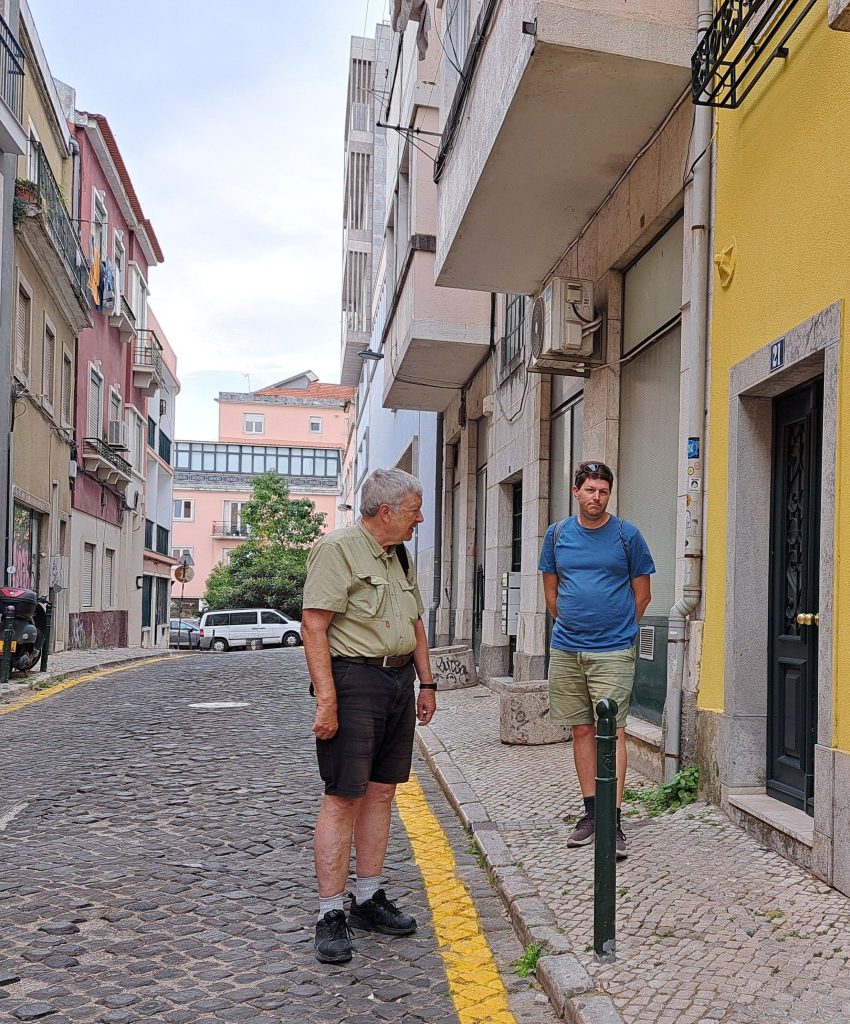
Looking down to the spot where the police car cut the taxi off at the pass

My post on today’s BWL author blog recounts my recent unexpected welcome to Lisbon, Portugal. https://www.bookswelove.com/
Happy Thanksgiving!
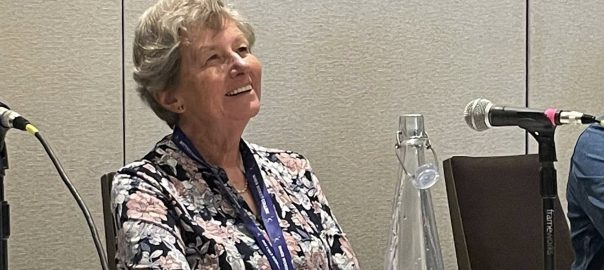
In August, at Calgary’s annual When Words Collide Festival for writers and readers I sat on a panel titled Home Sweet Homicide: the multitude of ways victims die at or near their homes. The moderator asked us panelists to describe the various methods we’d used in our mystery novels and why we’d chosen those approaches.
I talked about my Paula Savard Mystery Series set in Calgary. Paula, my sleuth, is an insurance adjuster whose work gets her involved in crimes. In books # 2 and 3 of the series, Paula investigates a building fire and a hit-and-run collision near a victim’s home. She comes to suspect both apparent accidents were coverups for murder. Book # 4 begins with Paula investigating a theft from a bicycle store during the COVID-19 pandemic. A murder takes place in the adjacent furniture store, which has closed for the pandemic and become the home of a squatter. The victim is bashed on the head with a weapon of opportunity: a candlestick from the store’s dining room display.

The panel’s most engaging questions related to the allure of poisons and medications thanks to our expert panelist, Lee-Anne Hancock, a retired nurse who worked at the BC Drug and Poison Information Centre. Lee-Anne told us about ordinary plants and medicines that can kill if used incorrectly — or correctly from a killer’s perspective. She noted that poisoning has been called the female murderer’s method of choice, perhaps because it is less messy and violent and doesn’t require physical strength.
As a mystery writer, I’m intrigued by the medicinal method that can easily be disguised as an accident. In two of my short stories, someone kills a relative by administering an overdose of their prescribed medicine. Even if suspicions arise and victims are autopsied, it would be normal for traces of their own medicines to show up in their bloodstreams.
In my novel, A Killer Whisky, set in 1918 Calgary, a man dies in his living room after drinking a glass of whisky. His symptoms are consistent with the “Spanish Flu” that has struck the city and the attending doctor diagnoses the flu as the cause of death. But the man’s neighbour, who is the doctor’s receptionist, suspects someone laced the whisky with a poison or a medicine that reacted with the alcohol to produce a toxic brew. She convinces a sympathetic police detective to investigate.
The Home Sweet Homicide panel took a light hearted approach that entertained the audience at the end of a busy festival day. Afterward, I pondered why I’ve tended to kill off my novel victims in their homes or on nearby streets rather than farther away. I came up with three thoughts.
1. My killers and victims always know each other, which is most common with real life murders, and relatives and friends often hang out together at or near their homes.
2. Homes are, by definition, private rather than public. There will likely be fewer potential witnesses to a crime and perhaps no witnesses. Any friends or relatives present might lie or conceal information to protect themselves, someone else, or the victim.
3. Home is supposed to be our safe place. A home break-in feels like a violation, and a killing in our home or neighbourhood threatens our sense of security.

On today’s BWL author insider blog, I talk about part of my experience at Calgary’s annual When Words Collide Festival for Writers and Readers. https://bwlauthors.blogspot.com/
WWC is a great three-day event for writers and readers of all genres of fictions. I’ve attended the festival every year since it began in 2011 and love the energy, information, networking, and more. For information about WWC 2026, check out the Alexandra Writers’ Centre Society website. https://www.alexandrawriters.org/
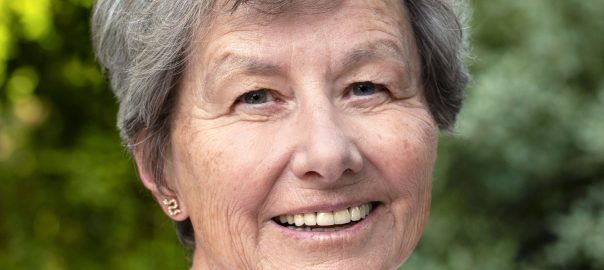
When my first novel, A Deadly Fall, was published in 2011, I decided to get a professional author photograph for book promotion. A friend recommended her friend, Deb Marchand, a local Calgary photographer who specializes in portraits, family pictures, and special events like graduation photos.
I contacted Deb, found her cost reasonable, and arranged a photo session. Deb likes to shoot outdoors and prefers the evenings for better light. We picked a date, but that summer kept getting hit with evening thunder showers, and we had to cancel our first date. The next time, another storm loomed, but we agreed to chance a downpour.
Deb chose a location on a park ridge. I had asked her advice on clothing for my portrait. Since it would be a head shot, clothes only mattered from the chest up. Deb said a plain coloured top with a rounded neckline would be best. I had also read that it’s best to avoid jewellery in portraits since it detracts from the face, which is what people most want to see about the person.
I looked through my wardrobe, couldn’t find the perfect top, and threw a bunch into a bag with the plan to discretely change on the ridge until we found the top that worked. Fortunately, on that evening of looming clouds few people were out walking in the park. After taking numerous photos of me in several tops, I went to Deb’s house, in the rain, to go through the selections on her computer. An agonizing choice when so many photos looked similar and I’m not the biggest fan of pictures of me.
In the end, I settled on a photo of me wearing a white top with a V-neck. I liked the look so much that I had the photo enlarged for my family room wall.

Deb and I became Facebook friends. She came to my book launch and read A Deadly Fall and my next two novels. In 2019, I realized my eight-year-old photo was out of date and asked Deb if she’d be interested in another photo shoot. This time, we met on a clear, spring evening in Calgary’s St. Patrick’s Island Park, and I had the perfect top–red with a rounded neckline.
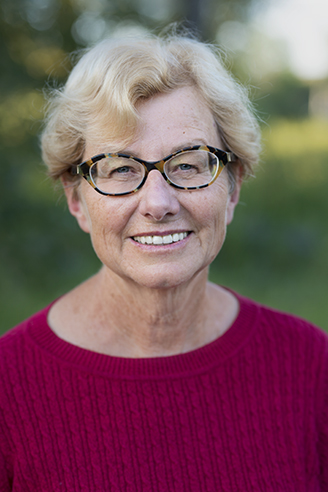
Six years passed. I published three more novels, let my hair go naturally gray, and. thanks to cataract surgery didn’t wear glasses anymore. Every time I sent out my author picture, I felt it didn’t look like the current “me.” I messaged Deb who was enthused about working with me again. She suggested Prince’s Island Park downtown for our third photo shoot.
Deb asked if I’d prefer a city or nature backdrop. I chose nature because I liked the greenery in my past photos and thought high rise buildings in the background would portray the wrong image for my shift to historical fiction. Deb thought a light-coloured top would be a good contrast to nature colours. I chose a pale pink rounded-neck T-shirt top.
On a warm, slightly windy and smoky evening in June, we walked around the Prince’s Island Park and caught up on each others’ news. Deb photographed me on a staircase to the Bow River and in front of trees and flowerbeds. She had me do models’ poses–chest out and swish your arms down your hips to your thighs–and fussed with my windblown hair. It reminded me that I wouldn’t want to be a model.
After the session, Deb emailed me a longlist of photos as well as her five personal favourites, from which I chose my two author photos. Here they are:
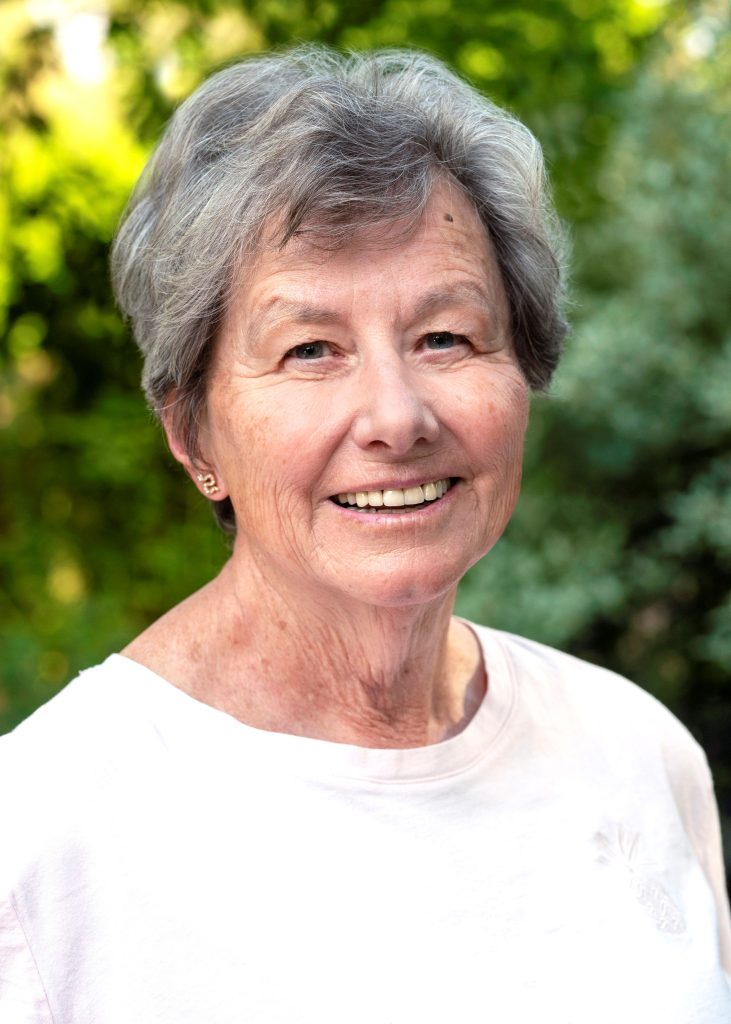
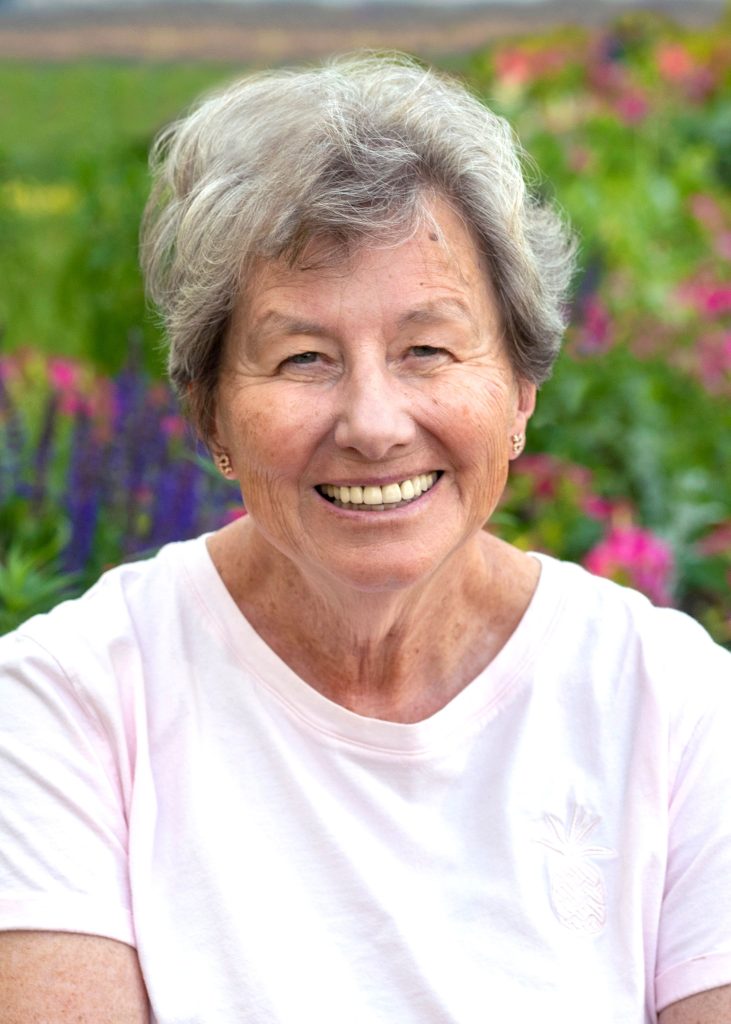
Deb and I shared a few laughs during the photo shoot. She said that, as a bonus, she’d add a joyous portrait as her gift to me. “It will be one of those great laughing photographs that makes me smile as big as your smile in the photo.”
Many thanks to https://www.debmarchandphotography.ca/ for all these years of great author photos.
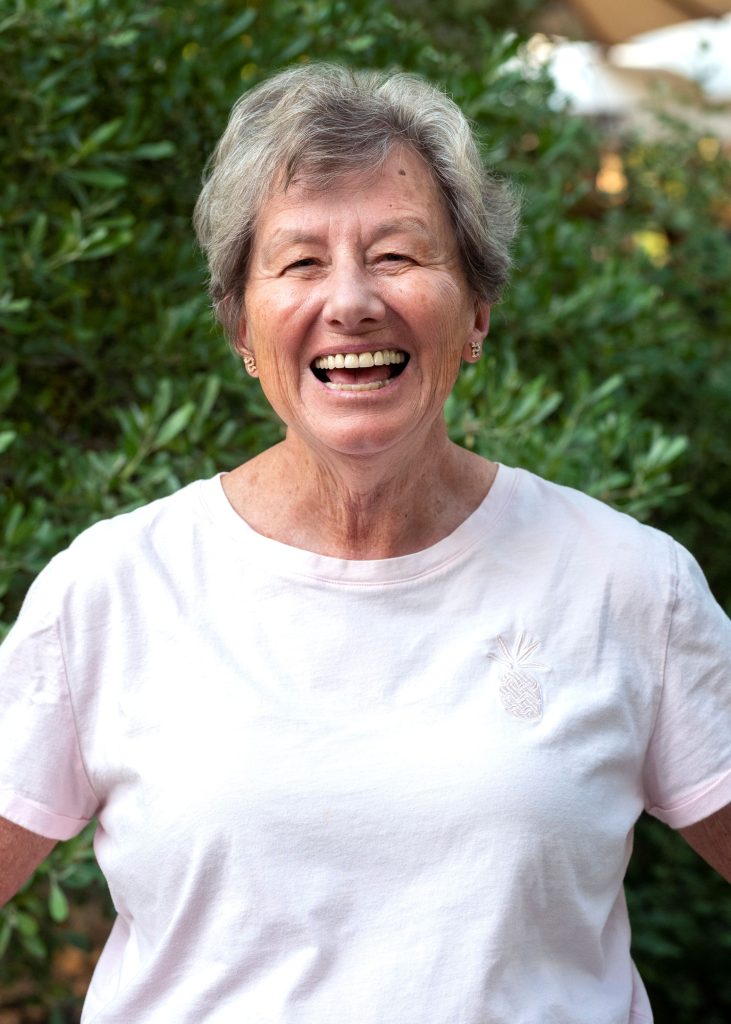

On today’s BWL author blog, I write about my professional author photographs over the years. https://bwlauthors.blogspot.com/

When I was a child, I devoured novels about children and teenagers who solved mysteries and crimes. The Bobbsey Twins, The Happy Hollisters, Nancy Drew, The Hardy Boys, Trixie Belden. I loved them all and passed the books down to my two sons who enjoyed reading them. Since my granddaughter loved Robert Quackenbush’s series of Sherlock Chick mystery picture books that I got from the library, I wondered if she’d like these classics for older readers now that she is almost eight.
The Bobbsey Twins were my gateway mysteries, but I could only find one Bobbsey book in my house. My granddaughter liked reading it with her dad, so I thought of trying her on a mystery series for the next reading level: The Happy Hollisters.
The Hollisters are a family of five children aged four to twelve. People they meet in the stories always comment on their happiness. The siblings never quarrel or pick on each other or complain about doing household chores. Their parents are equally happy. They don’t yell or punish their kids who constantly get into dangerous situations.
Since the novels were published between 1953 and 1970, I decided to read the first book in the series to check that it wasn’t too dated for modern children.
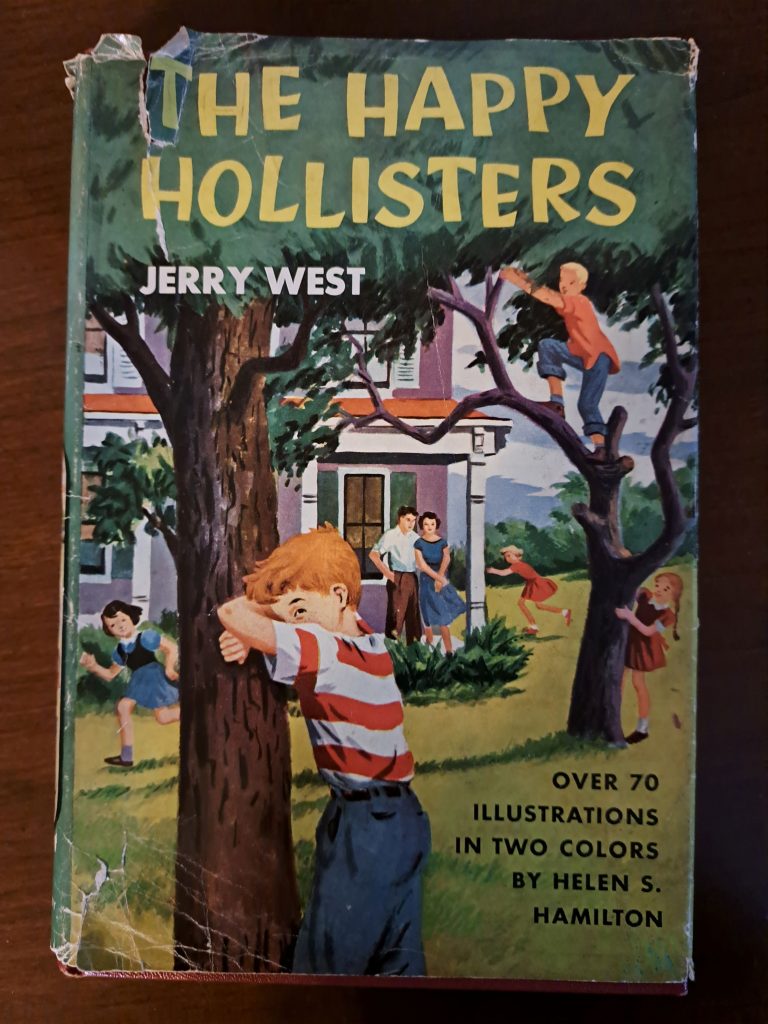
Naturally, the story reflects the times. The Hollisters live in a “white” middle class world. The two boys play Cowboys and Indians. Only the girls (cheerfully) help their mother make sandwiches for a family picnic and all three love playing with dolls, even “tomboy” Holly. The boys tend to be more rambunctious and daring than their sisters and take on the leadership roles.
But Pam Hollister beats all the neighbourhood boys in a mini-car race, and the girls get into scrapes and contribute to solving the mystery.
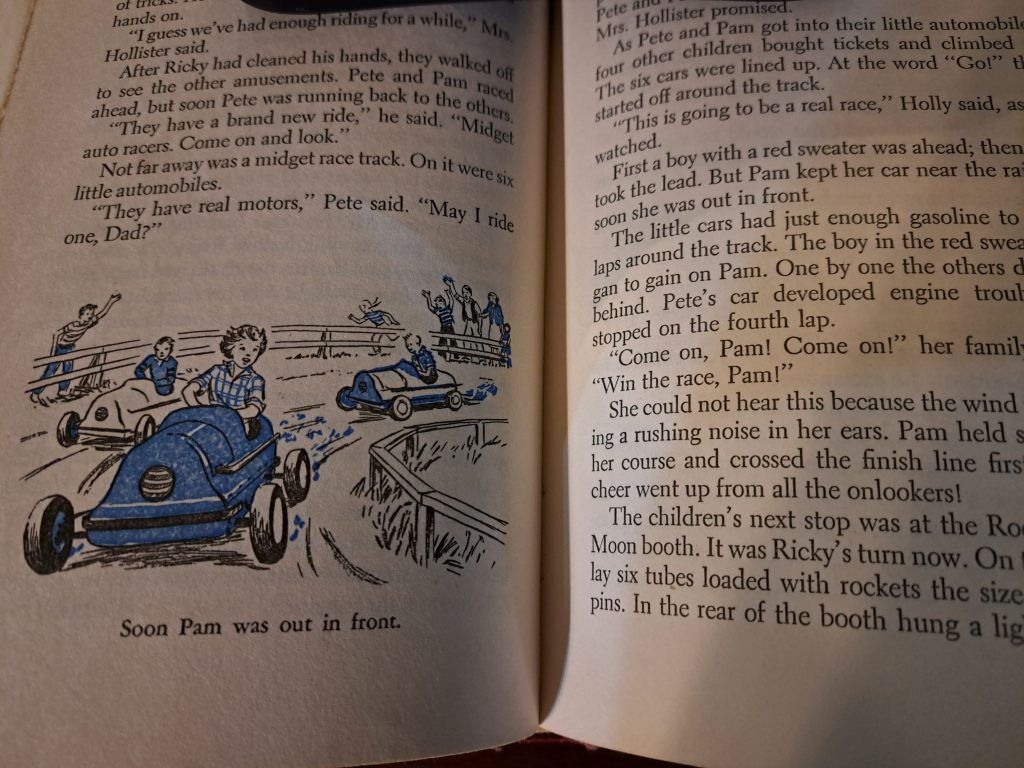
As a modern reader, what startled me most about the book was the children’s freedom. Mrs. Hollister lets four-year old Sue follow her older siblings everywhere. The Hollisters live on a lake, and Sue almost drowns. (Their intrepid family dog rescues her). When the older children build a campfire, Sue’s dress catches fire. Her brother Ricky burns his hands while saving her. Mrs. Hollister takes all of this in stride.
The other adults are equally unprotective. When the children find the final clue to the mysterious thefts, they prudently take their information to Officer Cal. He invites them to hop in his patrol car and help capture the thief. Children of the 1950s might have believed Cal would do this, but would today’s more protected kids find it plausible? But if they don’t, would believability matter if they’re engaged in the Hollisters’ adventures?
In the end, my son felt the books were a bit too long for his almost-eight-year-old. We’ll wait another year to try them on her. The Happy Hollister series was out of print from 1983 until 2010, when the publisher started to reissue the novels in paperback, hardcover, digital, and audio formats. You can buy the complete 33-paperback book set for $285. https://thehappyhollisters.com/product/the-happy-hollisters-bundle-collection/ The reissued books are described as faithful to the originals. I think for modern children, the stories could use some updating. For starters, I’d made the children, their parents, and their dog a little less than totally happy.
